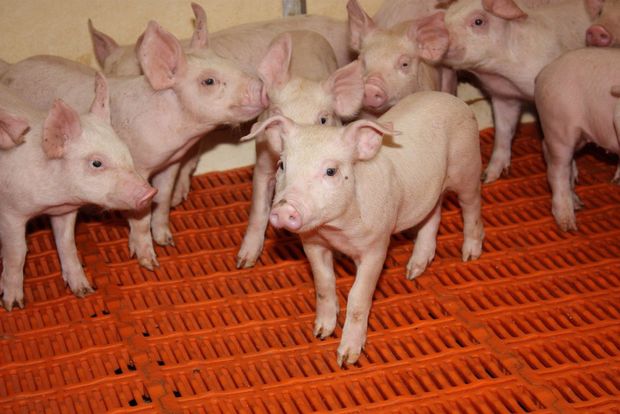Veterinary Feed Directive gives consumers added assurance
By Andrea Johnson, Assistant Editor www.minnesotafarmguide.com
When the Veterinary Feed Directive is implemented on Jan. 1, 2017, consumers won’t experience any differences in their meat products.
They will, though, have new assurances that livestock producers are using antibiotics in line with new Food and Drug Administration (FDA) rules.
That’s because producers will need documentation that veterinarians are involved in deciding when antibiotics are used to treat food animals.
“Pork is safe today, beef is safe, chicken is safe,” said Dr. Paul Ruen, DVM Fairmont Veterinary Clinic, LLP Vet-Partner. “What the Veterinary Feed Directive (VFD) does is create a system of veterinary oversight for all use of antimicrobials in feed.

“It also establishes veterinarian prescription use of water antibiotics, most of which have been over-the-counter in the past.”
The new rule was finalized in December 2013, with three years leading up to implementation.
Dr. Ruen is among those interacting with the FDA on the VFD.
He is a past president of the American Association of Swine Veterinarians, and was a member of the American Veterinary Medical Association Steering Committee for FDA Policy on Veterinary Oversight of Antimicrobials.
He said that veterinarians, just like himself, already work very closely with their clients and their livestock.
“What the new rule changes, is to increase the amount of paperwork to demonstrate that relationship,” he said.
Producers will need documentation “in hand” to purchase and use certain products. In the past, they didn’t need the paperwork, because most feed and water use antimicrobials could be purchased over-the-counter (OTC).
“It’s more paperwork to demonstrate that the veterinarian is involved in those decisions, and the producer is following the directions of the veterinarian,” he said.
In December 2016, the FDA will publish revised antibiotic labels that eliminate the use of medically important feed antimicrobials for the purpose of growth enhancement.
“(For instance) If an antibiotic had a labeled use of 10 grams per ton of feed up to 100 grams per ton of feed, oftentimes the lower levels of 10 or 20 grams were the levels approved for feed efficiency. The higher levels were the claims for disease treatment,” Ruen said.
“The labels will no longer include growth promotion claims or feeding levels,” he said.
In this interview, the veterinarian pointed out that in the past, in the present and in the future, it has never been legal to use feed grade antimicrobials differently than the label said.
Producers have a good track record of using these products correctly, he added, and a lack of residues at slaughter testing is evidence for that.
If producers were not following correct dosage or withdrawal times, residues would be an issue – but pork, for example, has not had an issue with residues for decades, he said.
“When you ask me if things are going to change that much – mostly the Veterinary Feed Directive sends a good message to the consuming public that all usage is now formally under the oversight of a veterinarian,” said Ruen. “I think that’s a positive, consistent message.

